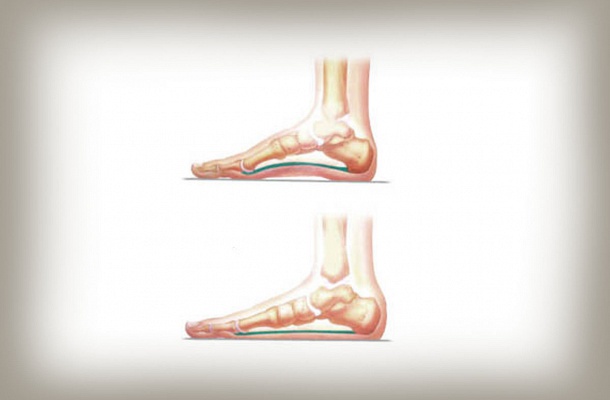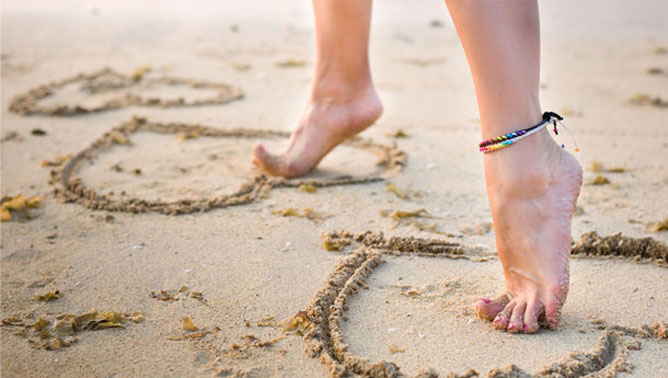
Can custom-made Bat insoles help to prevent fallen arch or flat foot?
Malformations and syndromes – flatfoot, bunions, hammertoe, heel bone gaff, heel, knee and low back pain – have already been talked over several times and we’ve got many questions. A great number of readers understand one of the most frequent problem, flat foot and fallen arch – that we haven’t talked over yet –, as they are treated as the very same problem. In order to prevent anomalies, we think it important to make it clear at the very beginning that flat foot and fallen arch are far from being the same (however they are interconnected to each other), only the colloquial language treats them as if they were the same. Fallen Arch or Flatfoot? Let us contemplate the tiger! Flat foot (pes planus) is a symptom where the longitudinal arch of the feet disappears or becomes almost flat, ligaments expand, “become tired”, “get lazy”, the positions of bones become rearranged and the tensile direction of muscles change. Fallen arch is a symptom, where the ankle shifts in a certain direction (pes valgus), e.g. when the calcenus inclines outward or inward or it turns forward and as a consequence, the shift of the ankle follows the same direction: it moves outward, inward or forward. These two deformations can hardly be separated from each other – that is how the common speech mixes them up –, however, it is beyond doubt that flat foot is caused by fallen arch in 80 to 90%, since the calcenus in its abnormal position provokes brutal load for the leg and for the arches of the sole. Of course, the foot with such deformities cannot roll over properly anymore and the joints get extreme loading (which may lead to pains in the knees, waist and back), and the formidable pressure may press down the cross arch of the foot (and the sole), which may cause more severe deformations – bunion, hammer toe –, what is more, the bad posture induces abnormal wear in all affected joints.

Now, having pointed out the difference between the two deformities, let us consider what we can do in order to prevent them, and what chances we have in the treatment of deformities that have already come about. By no means we want to belittle the knowledge and experience of the Hungarian Orthopaedic and Rehabilitation Specialists, but we must declare that in the field of diagnostics, computerized measuring of the soles (not to be mixed up with sole examination by podoscope) has been taking an increasing share from health assessment, which is underscored by the fact that special practices use the method in an ever growing number. The essence of the method is that a platform equipped with hypersensitive sensors maps the pressure picture of the soles of patients, and at the same time, a high-resolution camera films the position of the ankles and legs comparing them to an upright laser beam. Based on this assessment, the optimal insole is designed proper supports and softenings with 3D technology, and on the basis of this design, a precise device working to a thousandths of a millimetre accurateness machines the perfect form from a special shock absorbing foam. Vis-a-vis insoles measured and produced traditionally, the advantages of this production process are variability and the individualizing (made-to-measure) approach. While most insole producers manufacture some more or less proper insoles (arch supports) by following 10 to 12 kinds of moulds or patterns and using about the same number of modules, the number of opportunities after implementing the computerized sole pressure measurements, the machined unique insoles provide virtually endless forms of arch supports or insoles treating fallen arch or flat foot. These made-to-measure insoles can be a great help, first of all in prevention: providing proper supports, they can prevent inclination of the ankle in any direction and help also those who are actually suffering from flat foot. At the same time, of course, we must not disregard exercising on natural soils (sand, lawn, etc.) or the importance of barefoot walking or foot exercising.

Fallen Arch or Flatfoot
Attention: About the risks involved in wearing individual insole medical devices of Batz, please read the information sheet or ask your physician. Please see user instructions to the individual arch support at this address: https://egyeditalpbetet.batz.hu/en/instructions/ .
 English
English  Magyar
Magyar 


